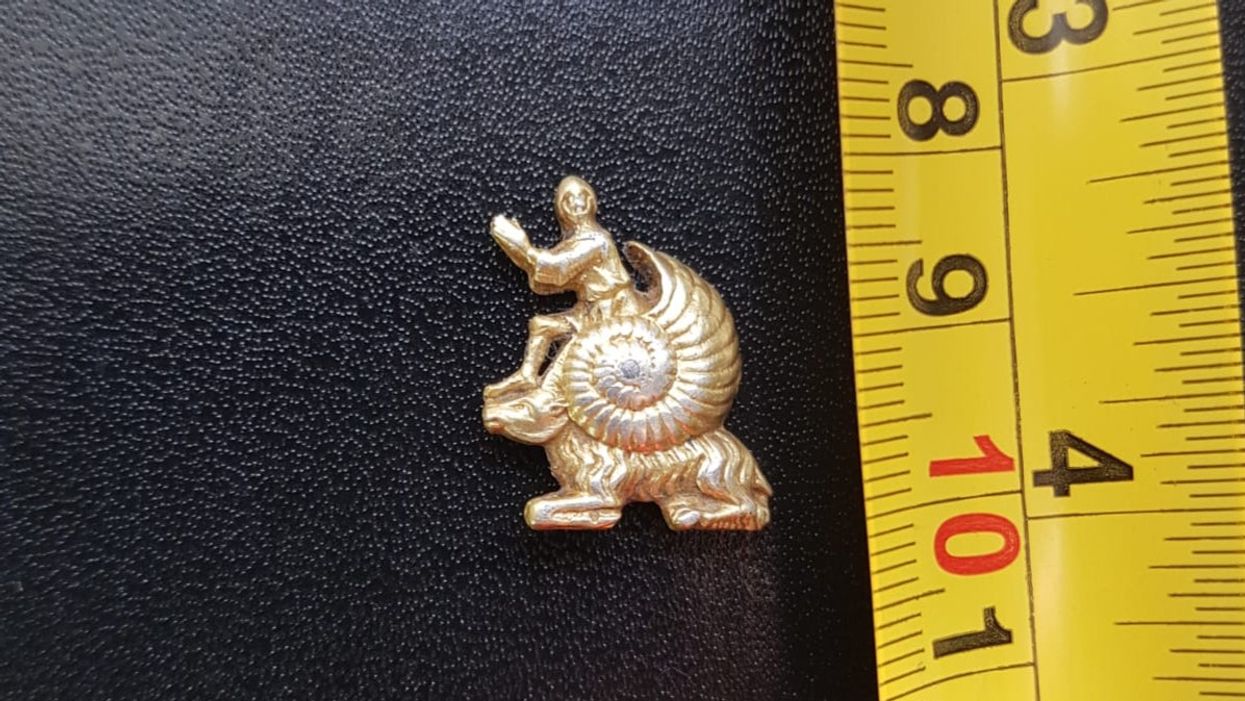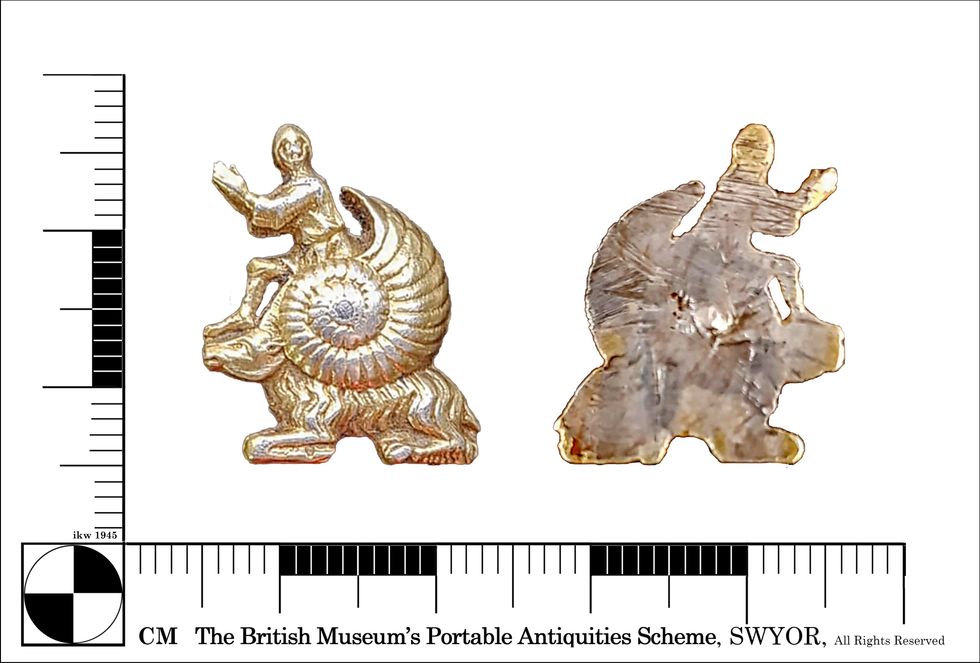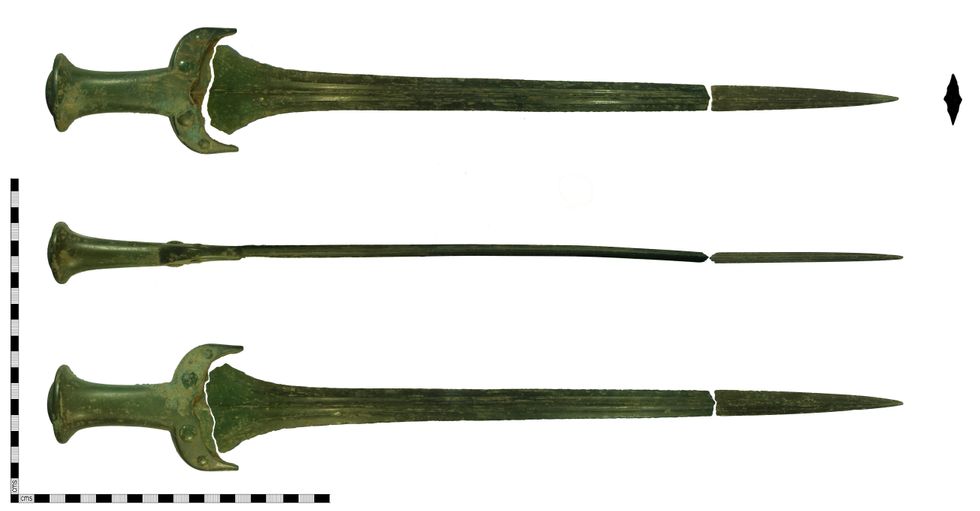Sherna Noah
Mar 22, 2021

The snailman mount could be nearly 800 years old
Yorkshire Archaeology Advisory Service/PA
A “snail man” mount which may have been “a form of medieval meme” has been discovered in west Yorkshire.
The object, unearthed in Pontefract in 2020, is believed to date back from between AD 1200 and 1350.
It depicts a human figure emerging from a snail shell on the back of a goat.
The mount – with the figure’s hands pressed together as if in prayer – is believed to have religious connotations.
While depictions of snail combat are a “mysterious medieval phenomenon”, the “mount’s more comical fusion of snail and man remains unexplained”, experts said.
Read more:
- ‘Billionaire’ Kylie Jenner sparks fury by asking fans to pay for stylist’s surgery after donating just $5,000
- White headmaster forces black student to apologise the ‘African way’
- Uber passenger who coughed on driver faces up to 16 years in jail
A “good versus evil meaning” in the knight fighting the slimy snail could have “mutated to satirical connotations,” a representative for the British Museum said.
“That means we can see this mount as an early meme” because of its humour, they added.
Wakefield Museum hopes to acquire the object.

Beverley Nenk, curator of later medieval collections at the British Museum, said: “This unusual silver-gilt mount may once have been attached to a leather belt or strap, or perhaps worn as a badge.
“The image of the praying knight emerging from a snail shell atop a goat implies an element of parody or satire.
“Snails are often depicted in the margins of medieval illuminated decorated manuscripts and are thought to symbolise cowardice, and this may be the intended meaning.
“The mount may be a satirical reference to cowardly or non-chivalric behaviour of opponents in battle, or as a parody of the upper or knightly classes. As such, it demonstrates the humour often found in medieval material culture.”

Other newly announced discoveries include Iron Age grave goods, such as a decorated bronze mirror and tweezers found at Kensworth, Bedfordshire.
A medieval seal matrix depicting an elephant was found in East Walton, Norfolk and a Bronze Age hoard with unusual rapier and bracelet in Stalbridge, Dorset.
The finds were announced as the most recent Treasure Report reveals that 1,094 cases were recorded as treasure in 2018 with a third of these acquired by museums.
The British Museum also announced more recent finds, such as the “medieval meme”.
Culture Minister Caroline Dinenage said: “Treasure has captured our imagination for centuries and it is fascinating to see what has been uncovered each year.
“These discoveries contribute invaluably to the knowledge and understanding of our shared history and I am particularly pleased that so many will go on display in local museums around the country.”
More than 96 per cent of treasure finds in 2018 were found by metal-detectorists.
Finders of the objects are being kept anonymous.
More: The infinite scroll: What happens when you ditch your phone?
Top 100
The Conversation (0)













